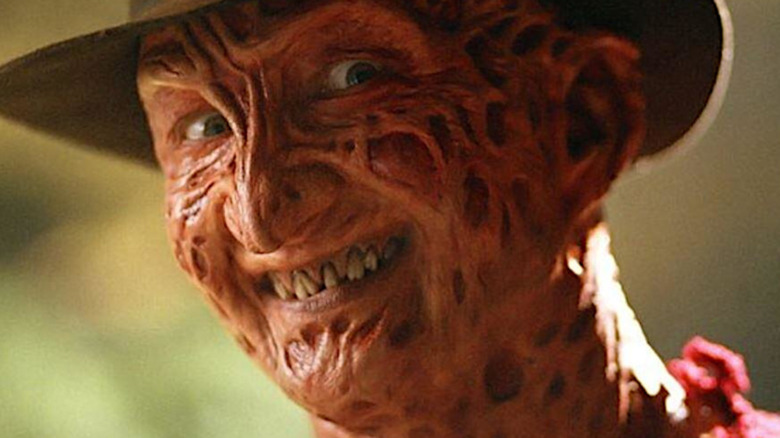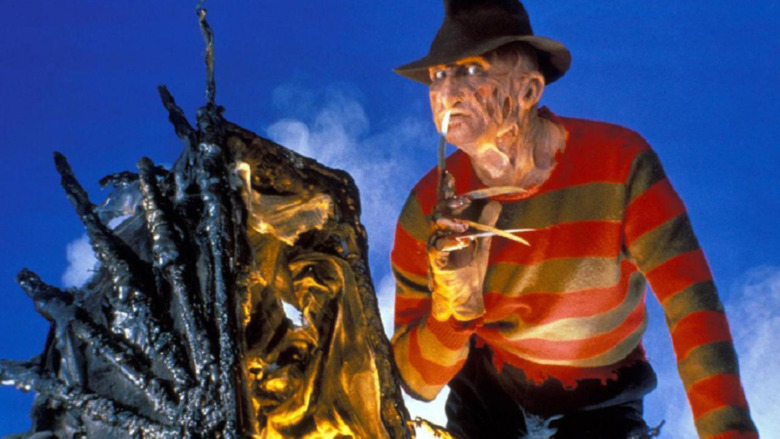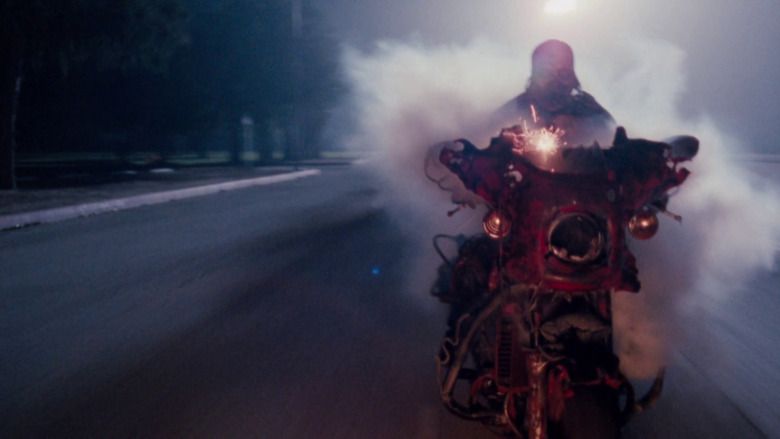Why A Nightmare On Elm Street 5 Was Almost Rated PG-13
They may be controversial among gore hounds, but horror movies with a PG-13 have proven their worth, particularly in recent decades. "A Quiet Place," "The Ring," "The Sixth Sense," and a host of other PG-13 horror tales represent some of the best of what the genre has to offer.
However, horror was almost entirely an R-rated affair back in the 1980s when some of the most famous faces in frights were either being introduced or cementing their names in the pantheon of scary stories.
Jason Voorhees in "Friday the 13th," Chucky in "Child's Play," Pinhead in "Hellraiser," heck, even Michael Myers didn't technically become a franchise baddie until 1981 with "Halloween II." And, of course, there's virtually no horror conversation to be had without mentioning the king of nightmares himself: Freddy Krueger.
Director and horror legend Wes Craven first introduced us to Freddy with 1984's "A Nightmare on Elm Street." Krueger is a grizzly guy — not only is his face scarred, not only does he have a hand full of finger knives, but his power over nightmares showed us some of the most gory, brutal death scenes ever put to film.
Over the course of the 1980s, fans would get to see Freddy appear in four additional films, facing off against dream warriors and dream masters both. But with 1989's "A Nightmare on Elm Street 5: The Dream Child," Freddy nearly faced off against a very different kind of challenger: a PG-13 rating.
No Blood in an Elm Street movie?
After the success of "A Nightmare on Elm Street 3: The Dream Warriors," the world was wide open for Freddy Krueger, but the path wasn't always clear. "A Nightmare on Elm Street 4: The Dream Master," didn't even have a director in place when filming began (via Bloody-Disgusting).
It turned out missed deadlines were about to become the norm. With the success of "Dream Master," New Line Cinema set to work on the next entry in Freddy's story, "A Nightmare on Elm Street 5: The Dream Child." In the documentary "Never Sleep Again: The Elm Street Legacy," Joe Seely, who plays Mark in "Dream Child," revealed that not only was the script being written during production, it was being rewritten so much that he'd given up on trying to memorize his lines entirely.
But an incomplete script is not the most interesting revelation from the Elm Street documentary. As recounted by Screen Rant, it turns out that director Stephen Hopkins sought to take Freddy where he had never been before — to a PG-13 rating. Special makeup effects artist Christopher Biggs has recalled a meeting he took with director Christopher Biggs, in which Biggs says that Hopkins told him, "No blood, I want no blood on any of these gags."
In case you've never seen a "Nightmare on Elm Street" movie, blood factors in pretty heavily. The first movie features a bed that literally explodes blood. And while no such bed appears in "Dream Child," it's fair to say the film still has its fair share of gore. So, what happened?
Dream Child was lucky to get an R rating
Believe it or not, there's more to an R-rating than blood and guts. And while "A Nightmare on Elm Street 5: The Dream Child" may be relatively less gory in comparison to some other entries in the series, it's still a grizzly motion picture. It may not be a bed full of blood, but there are characters who are horrifically transformed, one character is force fed her own organs, and none of that even touches the storyline.
It turns out that a story involving a young woman trying not to give birth to Freddy Krueger is not the kind of uplifting stuff people want to see in a PG-13 motion picture. And Freddy's backstory, which involves a nun being sexually assaulted and impregnated in a psych ward, doesn't exactly scream "this one is for the kiddies," either.
In a roundabout way, Hopkins was right to try and change things. In point of fact, the deaths they filmed were still gruesome enough that they still had to be cut down in order to avoid an X rating, let alone an R.
In the end, "The Dream Child" turned a profit ($22.1 million on an $8 million budget, less than half what the previous film achieved). Still, we can't help but wonder — what if Hopkins had gotten his way? Would a bloodless Freddy Krueger have drawn in new horror fans, or merely left the hardcore devotees scratching their heads?


